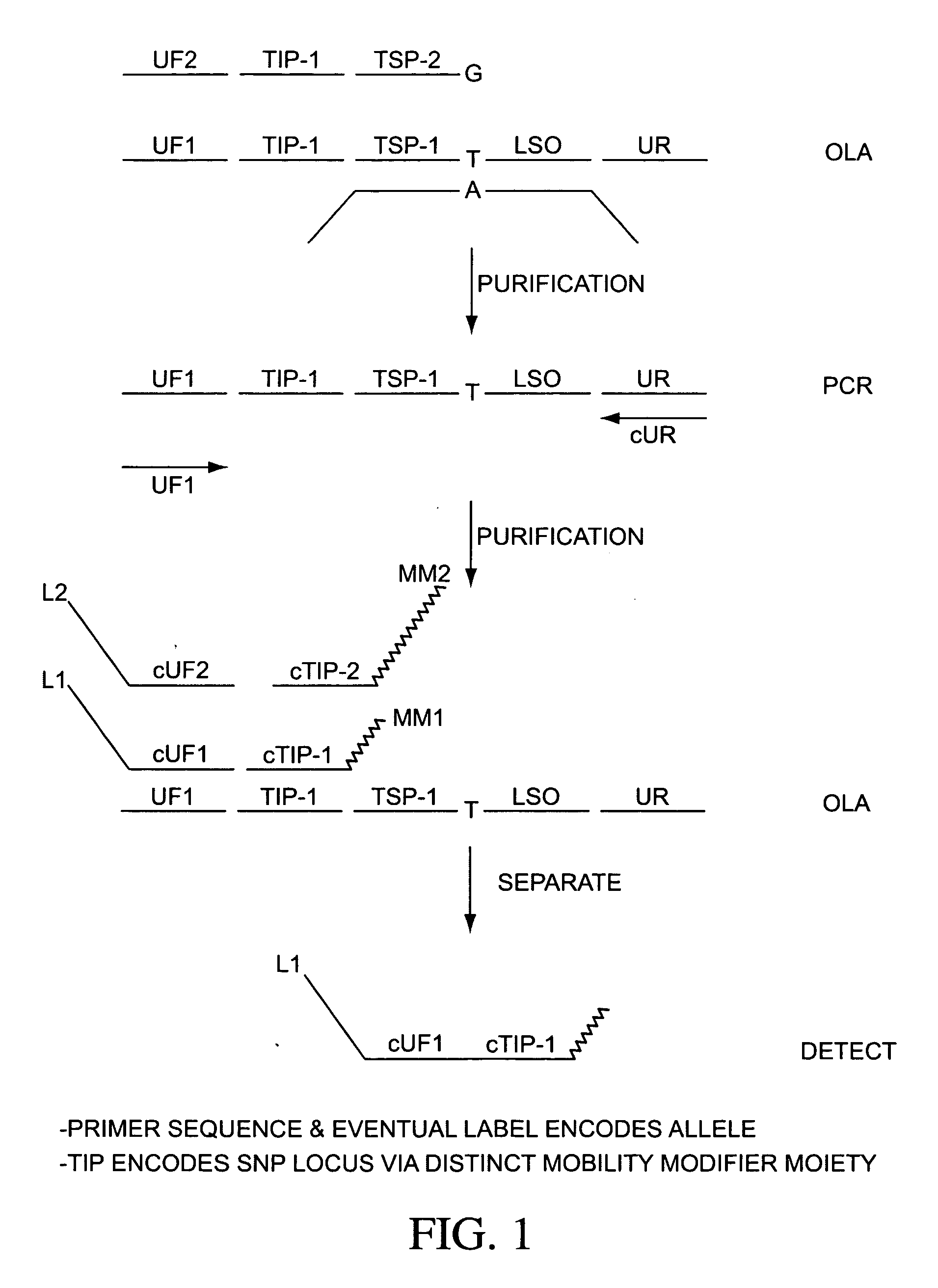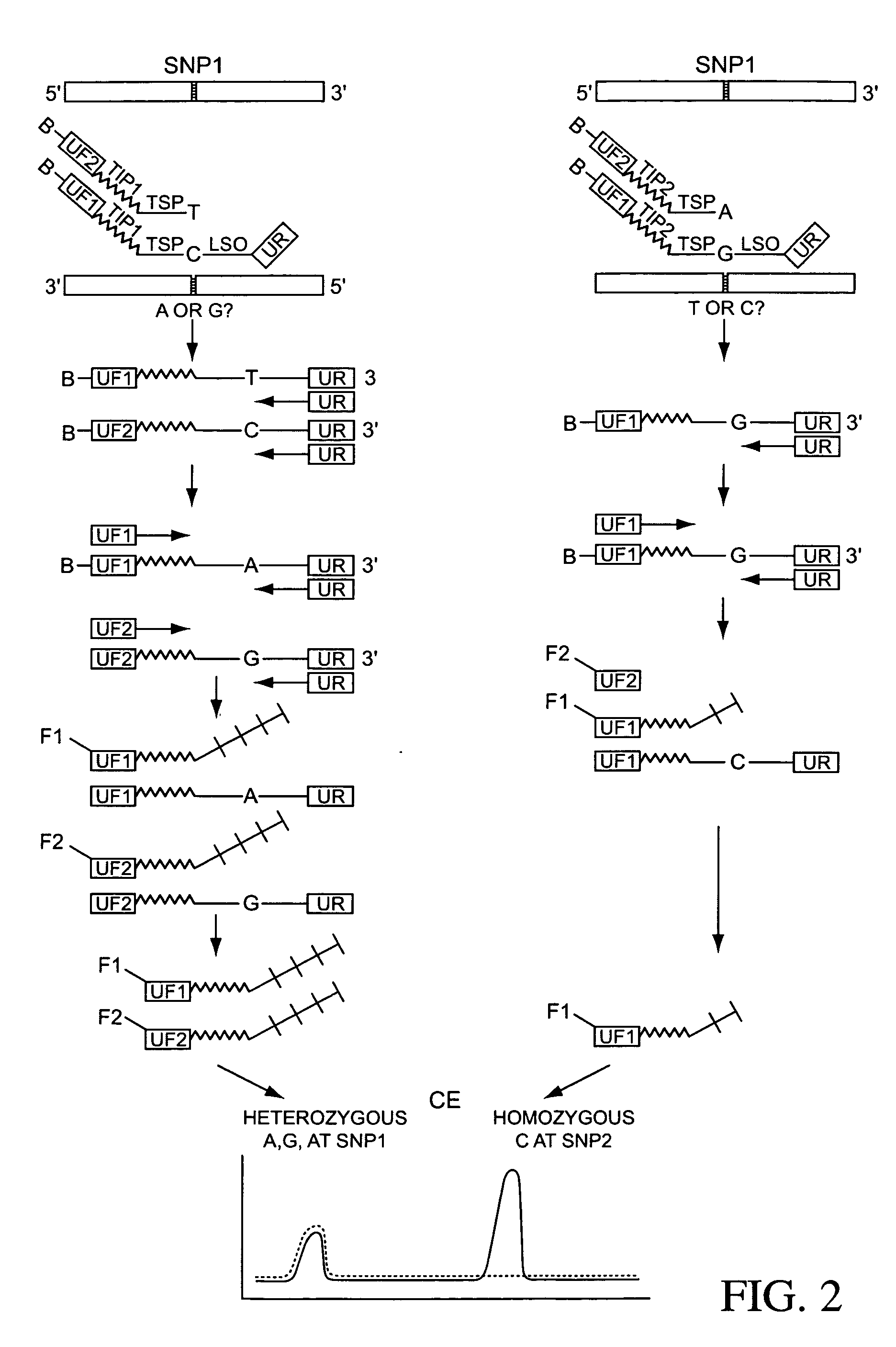Ligation assay
- Summary
- Abstract
- Description
- Claims
- Application Information
AI Technical Summary
Benefits of technology
Problems solved by technology
Method used
Image
Examples
example
Genomic DNA preparation: Genomic DNA is obtained from the Coriell Institute for Medical Reseach (Camden, N.J.) and prepared by conventional preparation methods.
Probe Synthesis:
Probes are synthesized by standard phosphoramite methods with phosphorylation of the 5′ end as required.
First LDR Reaction:
Reaction components for the first LDR comprise 1 ul 10× ligase buffer (comprising 7 mM MgCl2, 20 mM MOPS pH 7.5, 0.1% Triton X100, 1 mM DTT, 0.25 mM NAD) 1 ul of 100 nM first primary probe 12 plex mix, 1 ul of 100 nM first primary probe 12 plex mix, 1 ul 100 nM second primary probe 12 plex mix, 0.25 ul (40 units / ul) Ligase, 4.75 ul ddH20, comprising a reaction volume of 9 ul. The reaction is cycled 100 times with a 95 C. melting step for 10 s, 60 C. annealing / ligation step for 30 s. After the 100 cycles, reaction is held at 4 C.
Post Ligation Purification:
Reaction components for the post-ligation purification comprise 0.5 ul 10× buffer (comprising 67 mM Glycine-KOH pH9.4, 2.5 m...
PUM
| Property | Measurement | Unit |
|---|---|---|
| Affinity | aaaaa | aaaaa |
| Mobility | aaaaa | aaaaa |
Abstract
Description
Claims
Application Information
 Login to View More
Login to View More - R&D
- Intellectual Property
- Life Sciences
- Materials
- Tech Scout
- Unparalleled Data Quality
- Higher Quality Content
- 60% Fewer Hallucinations
Browse by: Latest US Patents, China's latest patents, Technical Efficacy Thesaurus, Application Domain, Technology Topic, Popular Technical Reports.
© 2025 PatSnap. All rights reserved.Legal|Privacy policy|Modern Slavery Act Transparency Statement|Sitemap|About US| Contact US: help@patsnap.com



